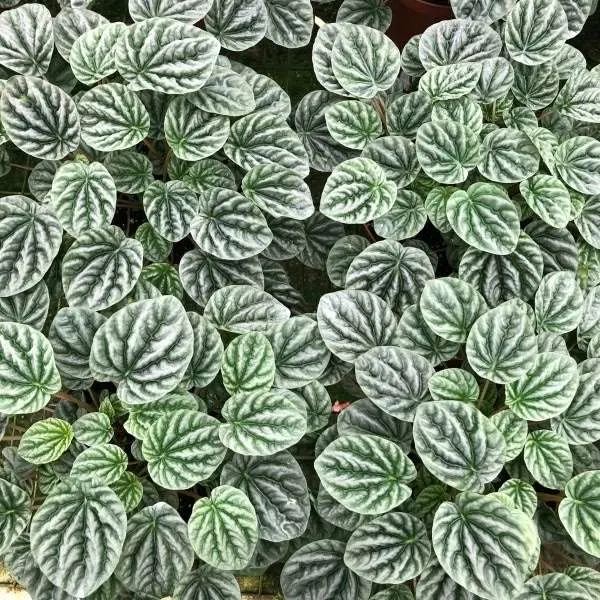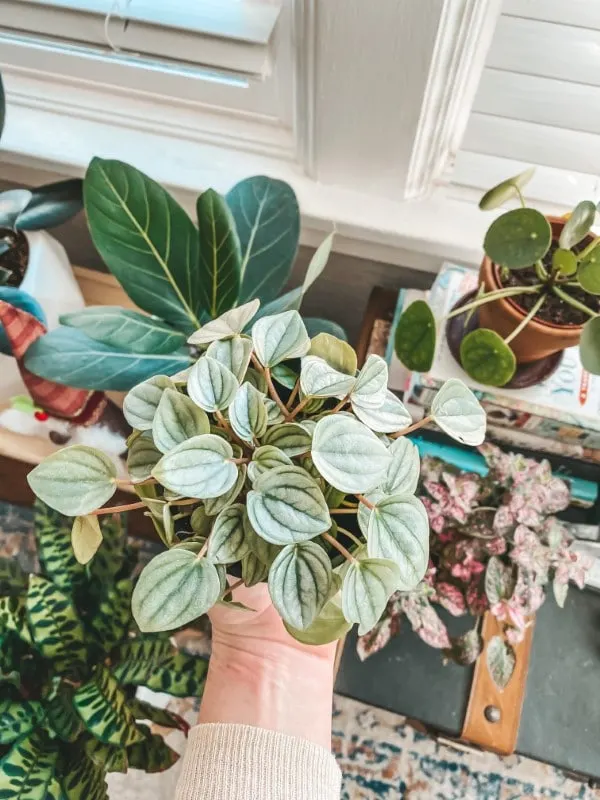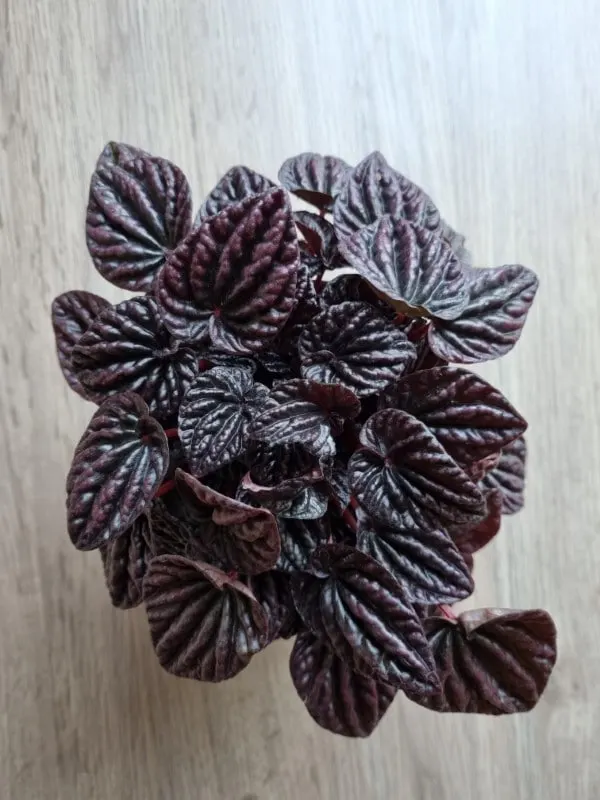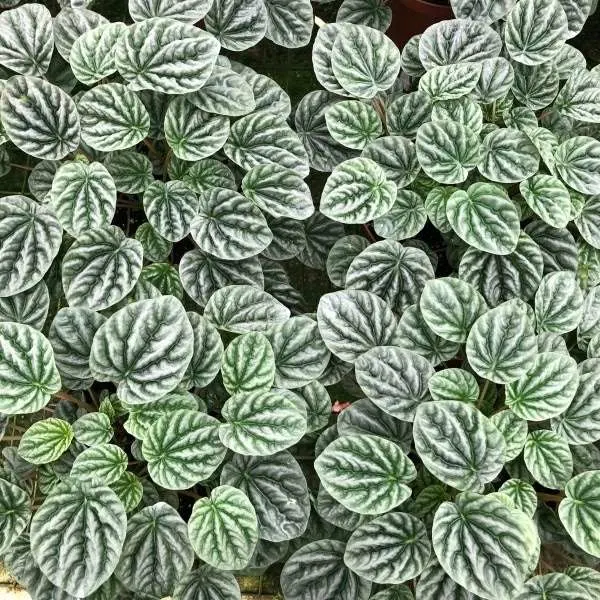Today, my friends, Peperomia Silver Ripple vs. Frost would turn out to be a surprisingly taxing battle.
There is a slight controversy regarding these species. A few people believe that both are the same plants, while others say they are different.
Today, I am going to settle this debate.
But before we take a look at the two most beautiful Peperomia species: Silver Ripple and Frost, let’s take a briefing on the Peperomia genus itself.


Peperomia
Now, Peperomia is one of the two main genera of the family. The other one being Piper, includes most of the pepper-producing plants. In contrast, plants of Peperomia are small, long-lasting, ornamental epiphytes.
These non-parasitic plants grow on woody trees and absorb the nutrients needed for their growth from their surroundings, including the debris present around them.
More than 1000 species related to the genus are recorded. They vary greatly in looks, uses, leaves, stems, and plant potency. Some of them are fast growers (non-succulent types), and some of them are slow.
Today, we will look at the two most beautiful species; Peperomia Silver Ripple and Frost. There is a slight controversy regarding these species. A few people believe that both are the same plants, while others say they are different.
Today, I am going to settle this debate.
With that said, Peperomia Silver Ripple vs Frost would turn out to be a surprisingly taxing battle.
Before going into the field, let me explain the basics.
The scientific name of Silver Ripple and Frost is Peperomia caperata.
So, Basically, these plants are actually two different mutations of the same species; Peperomia caperata.

It further mutates into different colors and different types of plants. Some of these types vary so greatly that they seem separate species, while few are so “amazingly parallel” that they appear the same.
Therefore, when we say that the Silver Ripple and the Frost are names of the same plant, we are deluged in the latter problem.
Peperomia Silver Ripple vs Frost
Aforementioned, that the Silver Ripple and the Frost are related to Peperomia Caperata. So, both of them have thick, bold stems, and they are fresh, fleshly, evergreen, extraordinarily resilient, and very stimulating plants.
What’s The Difference?
The most crucial thing to consider in the debate is the leaves. THAT’S IT.
That’s only the main difference between the Silver Ripple and the Frost. All other slight distinctions rise due to this very reason.
1. Leaves in Silver Ripple
As the name suggests, this mutant should have ripples, waves, ridges, creases, wrinkles, undulations, and heaves on the leaves — I literally wrote the whole thesaurus here ‘cause there are LOTS Of them.

Got Ya!
These heart-shaped, extremely furrowed leaves look drastically unique indoors and outdoors. They are on a little-succulent side and show a silver tinge in proper lighting.
2. Leaves in Peperomia Frost
On the other side, leaves in the Frost variant of the species are less puckery and wavy.

These leaves are not much succulent have a lot more silver on them. Individual leaves look like frozen watermelons.
This frosty silver look is the exact property responsible for its name.
Nevertheless, the overall shape of the leaves is identical in both plants. Growing simultaneously in both height and width gives them a heap-like appearance. They can reach up to 12 inches vertically and horizontally.
On that note, that’s the fundamental difference between Peperomia Silver Ripple and Frost.
However, Peperomia Moonlight and Frost look pretty alike.
Also, you might have seen Scindapsus treubii ‘Moonlight.’ Those leaves are actually oval/elliptical rather than heart-shaped, but they show the same silvery hue.
Let us know in the comments if you want to see Peperomia Frost vs Moonlight.
Now, let’s go towards the ‘similar’ side of the debate.
The most vital aspect of a plant’s life is proper care. Different plants have different needs and show different difficulty levels of caring.
But the plants belonging to the same species, regardless of their mutations, share stunningly same caring conditions.
In this way, caring for all of the Peperomia silver varieties would be the same.
Caring for Peperomia Caperata Silver Ripple and Frost
As I said before, both of these plants are drastically resilient, making them a perfect fit for beginners.
I have mentioned in many previous guides that the thriving conditions for the plants primarily depend upon their native regions.
The P. caperata is native to the tropical rainforests of Brazil, central and South America.
Therefore, this plant will love to live in annual warm and humid conditions. If you live in tropics or subtropics, you can easily steal the sights by growing these beauties inside your homes or offices.

Let’s jump straight into the main requirements:
1. Light Conditions
Almost all plants flourish their best in bright indirect sunlight but being really tough, these plants can also sustain themselves in low to medium light.
They can also grow under fluorescent lights but require at least 10 to 12 hours of proper lighting. If you are growing them indoors, it is always better to feed them with adequate daylight and evening sunshine.
It would be best for you to place them at least 4 to 5 feet away from the sun side east-facing window so that they get a perfectly filtered indirect daylight, or put them in front of a westside window to bath them with good evening sun.
Please keep them away from direct rays of the sun. It can scorch up the leaves and can burn out your plants’ foliage. Use a sunshade of a garden net if you are placing them outdoors.
The leaves grow slightly smaller in low lights, and overall growth is slower.
2. Temperature
Looking at the native regions of the plant, we see that it should require an average temperature of 76.5°F (24.7°C) for the Silver Ripple and Peperomia Frost to grow at their maximum potential.
They thrive their best in the temperature range of 66 to 76 degrees Fahrenheit or, to say, 18.8 to 24.4 degrees Celsius.
Silver Ripple is a little more tolerant than the Frost, and being on a succulent side makes it survive a slightly wide range of temperatures.
However, both can still grow well in 60- or 80-degrees Fahrenheit.
Please ensure you don’t expose any of them to freezing conditions or temperatures under 10 to 12°C. Such low temperatures can cease plant growth, making them prone to other diseases.
Ice cold temperatures usually kill the plant because they result in ice crystals forming in the plant cells.
3. Humidity
The Silver Ripple being slightly succulent, can withstand lower humidity levels than are needed for the proper growth of Peperomia Frost. However, they still need higher moisture than actual succulents.
Here’s a shot of the humidity levels of South America.

I found the average after doing my own math:
53+66+66+52+100+69+66+75+70+89+21+94+59+56+58+75+83+30+44+53+69+45+72+34+56= 1,555. And, 1,555÷25= 62.2 😊
But actually, it doesn’t mean that 62 percent would be the best humidity for these plants.
However, it is possible to keep them in general household humidity. They prosper in medium to high levels of humidity.
That’s because the average humidity of the main native rainforests of Brazil is around 70 percent.
Therefore, the best conditions for your Peperomia Caperata(s) would be around 65 to 80 percent.
It is better to move your tropical, balmy, moisture-loving plants to places like a bathroom and kitchen during hot and dry seasons. These places have a lot more water vapor than other house areas.
4. Watering
When watering your Peperomia Silver Ripple and Peperomia Frost, make sure you let a few inches of the topsoil completely dry out before watering.
Due to their fleshy and chubby leaves, these plants can easily endure a little underwatering and like to get dry out between waterings. On average, they need to be hydrated every 10 to 14 days.
While giving them water, thoroughly wet the soil slowly and let the excess water drain out from the bottom holes.
Always keep your plants safe from overwatering as it can increase the risk of root rot. That’s why it is always best to check the soil’s moisture levels.
You can check it by sticking your index finger in the soil up to your knuckle. If it feels entirely dry…it’s “water time.”
5. Best Soil Mix
Peperomia Caperata needs a well-draining, reasonably moist, light, arid, and slightly acidic soil mixture.
You can use a typical mixture of perlite and peat moss, but if you want to unlock your plants full potential, you should use the following recipe to make the ultimate blend:
- First of all, fill 1/3rd part with regular potting mix, also add in a few grains of perlite and some organic stuff.
- Then fill another 1/3rd with a mixture of peat moss and perlite. That’s going to help us with getting that slight acidic mixture. Use sphagnum peat moss to slightly decrease the pH of the blend.
- Now fill the rest with an equal amount of well-decomposed compost and any type of bark to make your soil well-aerated.
With that said, now you can easily take the best care of your perennials.
>> Related Post: Peperomia Rana Verde – Top 10 Caring Tips and Features
Conclusion
Here we are, Peperomia Silver Ripple vs Frost; so who won. For me, it was P. Caperata… you get the picture, right?
To conclude the talk, I must say that it was a pretty good experience writing about such controversial topics, ha-ha…just kidding.
Let me know in the comments whether you liked todays’ featured plants?
Also, share this precious info with your friends and family.
Stay sound, Regards.
- Writer: Mahad Hussain
